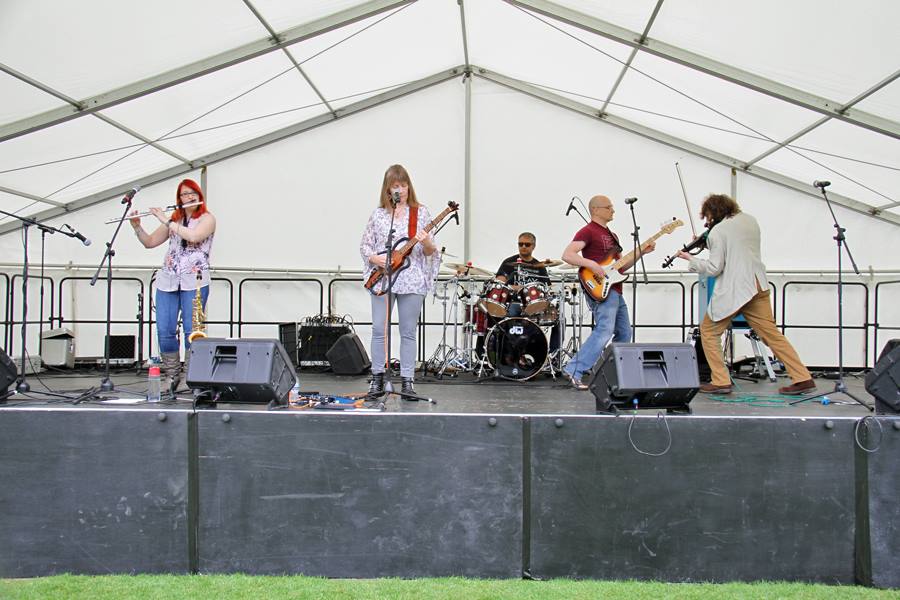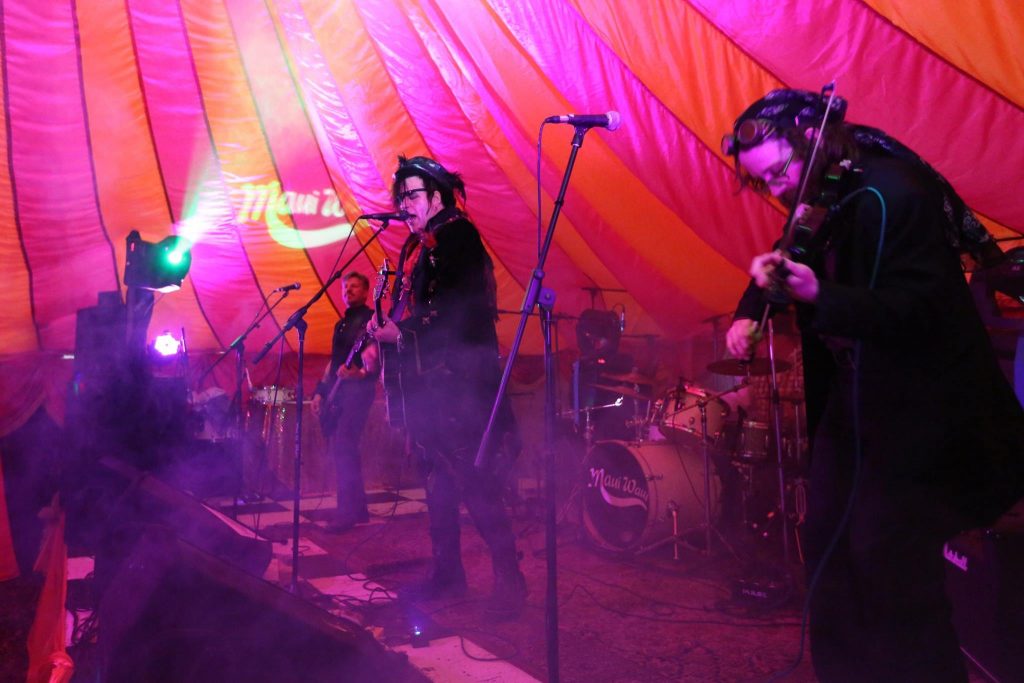A week ago (Sunday 30th) I presented myself at an imposing pile of stone and brick on Victoria Embankment, feeling as out of place as I always do in London’s financial district (walking from Bank Tube station, down Threadneedle Street to Liverpool Street station, for instance through the high-earning office types rushing from one meeting to another, the restaurants and outfitters that could swallow my bank balance in one gulp, the immaculately polished career women – and the homeless so established as to be practically able to claim squatters’ right). I was there to bolster the viola section of the JP Morgan Symphony Orchestra for a final two rehearsals leading up to a concert.
Workplace music-making is not that unusual. Many offices, including Oxfam’s British headquarters when I was working there, have community-style choirs that meet on a lunchbreak; my last in-house employer, Oxford University Press, had a choir that was more like a small choral society, with whom I sang Rossini’s Stabat Mater among other things, and a chamber orchestra was launched there just as I was leaving, which with tentative management backing seems to be becoming a considerable success in a short space of time.
Running to a whole symphony orchestra is rather rarer however, even if Morgan Chase must have a very large and well-educated workforce in London to draw from (and let’s face it, good amateur classical musicians are generally university educated and of white-collar origins). Unsurprisingly, a number (I’m unsure how large) of regular members are in fact not employees, but I was impressed to be able to guess from communications about invoicing that we two additional violas and the harpist were probably the only hired bumpers for this concert – either that or the only ones who had not played with the orchestra before, in its four concerts of existence.
This counts as remarkable both because there are always a lot of specific requirements for an orchestra, but also because the programme for this concert was demanding on forces. We opened with the prelude to Wagner’s Die Meistersinger von Nürnberg and followed it with two symphonies: Schubert’s fourth, and Brahms’s first. Of those, the only one that could be described as at all for chamber orchestra is the Schubert (for essentially Classical orchestral forces, like most of his work).
Orchestra programming varies greatly in its coherence; some people and organisations plan meticulously thematically or biographically connected concerts, others pick pieces either without much reference to each other or for deliberate contrast. This concert raised all sorts of interesting musical ideas by being united around a key centre. Wagner is not much given to staying in one tonality, but the Meistersinger Prelude is both to a comedy and seeking to evoke a somewhat antique atmosphere, and so besides featuring a fugal section and a gavotte-like theme that clearly evokes truly light comic opera, it starts and ends at least in an undeniable C major. Both symphonies, on the other hand, are in C minor.
This last fact may seem to tend away from a key unity – especially as C major tended to be used in the Classical and into the Romantic as a rather straightforward, unsophisticated key, much used with trumpets and timpani, tending to monumental vigour but little complexity; whereas C minor, at three flats, was towards the traditionally melancholy extreme of regularly used keys until the mid-nineteenth century. However, by the late Classical there was an already developing tradition of ending minor-key symphonies in the tonic major, in a sort of greatly extended tierce de Picardie that could last for anything from a coda to the entire last movement. This became much solidified by Beethoven’s monumental influence over the writing of symphonies in particular for decades after his death; the major key last movement (excluding perhaps the introduction) approach becoming linked with the struggle from darkness to light symphonic model found in two of his most-revered symphonies, the fifth (itself in C minor) and the ninth.
All the pieces in the programme, then, finished in the same C major (the Schubert, composed halfway between the premieres of Beethoven 5 and 9, probably shares influences with them rather than being directly influenced in its key scheme by the Fifth). We know Beethoven’s influence on Brahms, especially as symphonist, amounted to the distressing; he put off writing (or at least completing and releasing) a symphony until middle aged for fear of comparisons with the composer he was already often likened to, and then chose to overtly embrace the similarity in his first symphony, particularly echoing the Ninth, which had become venerated as a sort of untouchable pinnacle of symphony writing over the intervening decades.
In a sense, this veneration for Beethoven’s symphonies has never stopped, though the presence of great late-nineteenth- and twentieth-century symphonies in the repertoire has surely moderated it in the musical community as a whole. In that sense then, the musical world and the world of C minor and major inhabited by Brahms and Wagner is familiar and comprehensible to the modern musician. Schubert’s fourth symphony, I think, less so. Written as the Classical era was giving way to the Romantic, I am not sure its soundworld was thoroughly understood by everyone playing it on this occasion.
It is a mistake to simply label Schubert as a Romantic composer, while Beethoven is Classical, then transitional and then unique, and Hummel (say) is a Classical holdover. He was writing almost as early as Beethoven, and while he pushes modulation, length of movements and attitudes to emotion to decidedly nineteenth-century lengths, there are other aspects that require a classical approach. His orchestration and textures (down to the kind of string patterning used in accompaniments) are often resolutely eighteenth-century; his fifth symphony requires no larger forces than Mozart’s 40th (and therefore less than Mozart’s last). He also simply must be remembered to have been working mostly before even Beethoven’s transition to the new approach had been finalised; and he is much less given to pushing the boundaries of his players (or their instruments). Even in this C minor symphony, subtitled (though I would not like to say by whom) ‘Tragic’, there is no fff, no Presto and few of Beethoven’s characteristic sfz markings; and the third movement is (in character and structure as well as name) a Menuetto rather than a Scherzo. Schubert’s players had the expectation of having Classical music put in front of them – and I rather fancy that Schubert, less of the driven idiosyncrat than Beethoven, wrote with the expectation that his music would be played as if it was solidly within the tradition, and found other ways of producing a subversive (‘progressive’?) overall musical result.
The concert itself intrigued me almost as much as the programme. Fully-fledged concerts by workplace ensembles that I have been involved with have tended to be rather extramural affairs; they may be partly underwritten by the employer, and there is almost certain to be branding on the programme, but that is often it – external venue, no explicit representation of the firm at the event, logistics organised as it were by the ensemble rather than the company.
This concert took place at Southwark Cathedral – so external certainly. However, it was much more made a part of the corporate activity of JP Morgan than I had expected from other experiences. I hasten to clarify that I do not mean it paid into the bank’s coffers! indeed, entry was free, and there must have been significant expenditure from someone’s budget involved. However, the ushers were volunteers from the workforce, rather than the cathedral’s body of volunteers or whatever friends the orchestra committee could tempt into the job. And the music was preceded firstly by a welcome from the Dean which (I think on instruction, this being an unusual feature) laid out connections between the cathedral and both the US and the City financial sector; secondly, by a speech from the (I approximate the technical title) Senior Management Sponsor of J P Morgan Music (they apparently also have two choirs, have run chamber concerts and are about to launch a rock band … ); and thirdly by some words from the chair of the bank’s racial diversity resource group, which latter had apparently collaborated on putting on the concert. The management sponsor returned at the end to deliver a lengthy (because laudably inclusive) but heartfelt set of thank-yous. Pains were taken by both corporate speakers to link the putting on of this orchestral concert with corporate ideals, ethos, values and so on; which, whether actual reasons for the activity or applied post hoc to something people just wanted to do, was either way interesting. In terms of the wider company engagement (besides the stewards and the extra hours put in by the security staff managing out-of-hours rehearsals in company offices!), it maybe should not be difficult to get people into a free concert, but it requires a little more to fill a cathedral to standing room only, which this did; and the enthusiasm of the applause after a well-played, but long and emotionally demanding, programme of music plus several orations suggests an element of inside job to me. Apparently wealthy patronage of the arts is not dead, and I shall withhold my ironic self-employed amusement at being told (not personally of course, but sincerely) ‘if you’re not part of a corporate diversity resource group, I urge you to join one because it’s important for everyone’…


